Archivist
Senior Member
Given that the detached house thread started a while ago had a few legs, I thought I would make a thread for some low-rise residential projects around the city that for one reason or other I thought notable. Additions are, of course, welcome. Mods: As I've put in considerable discussion of the architects, etc., I think this is more appropriate to the Buildings & Architecture section than to the "Photos" section, so I hope this is correct.
Early Low-Rise Residential
Toronto is not blessed with a large number of very early apartment buildings, and when I look at these three examples, I can't say that I'm exactly disappointed. These three, the Rosecourt Apartments (1913), Forest Hill Apartments (1931), and the Balmoral Apartments (1929, Stephen Coon and Sons) strike me as being heavy and downcast. Perhaps unfair to pick on the poor little Rosecourt, so very heavy feeling with its crenellated twin towers - it's just ungainly. The Forest Hill does it's work along a commercial part of Spadina in Forest Hill Village admirably, lending a (shall I say it?) vaguely New-Yorkish feel to the strip. But they all strike me as heavy and somewhat unpleasant. Still, death to those who would ever suggest getting rid of these. (They are all on the Inventory).
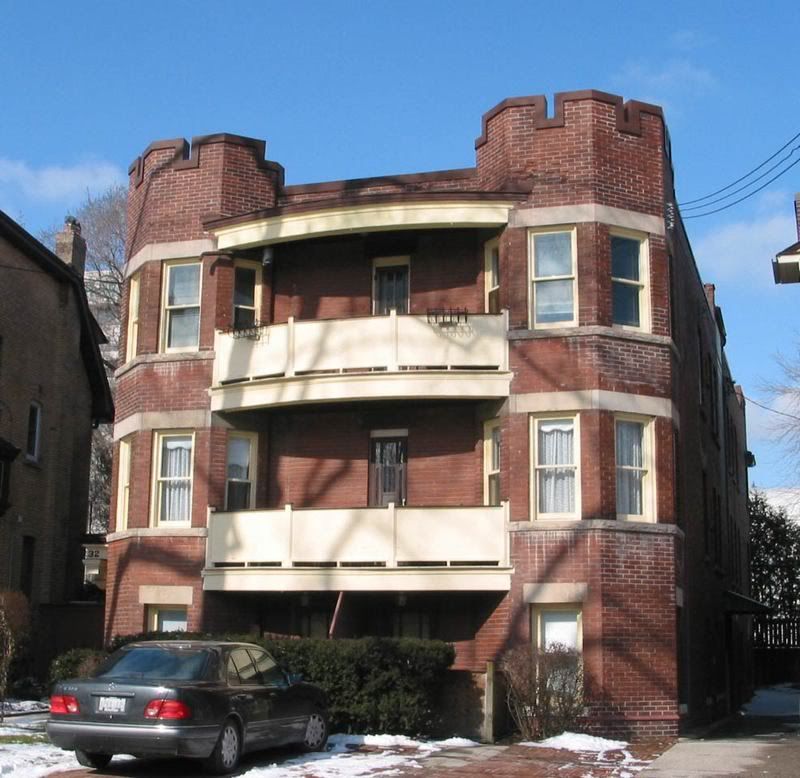
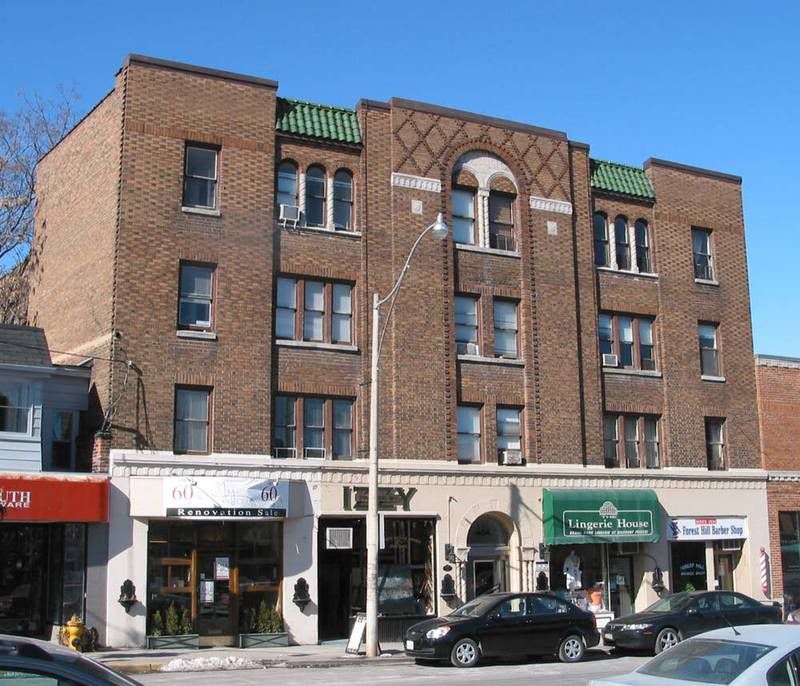
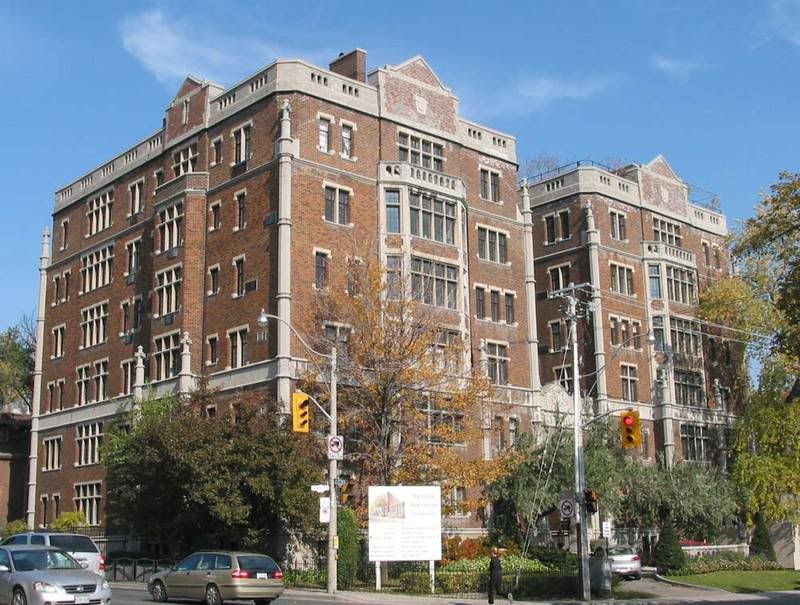
Art Deco
The Star Mansions are an example of Toronto's stripped down Art Deco vernacular, in which the city's architects (in this case, H.C. Roberts, in 1932) barely dipped their toe into a style perhaps too florid for our northern climate.
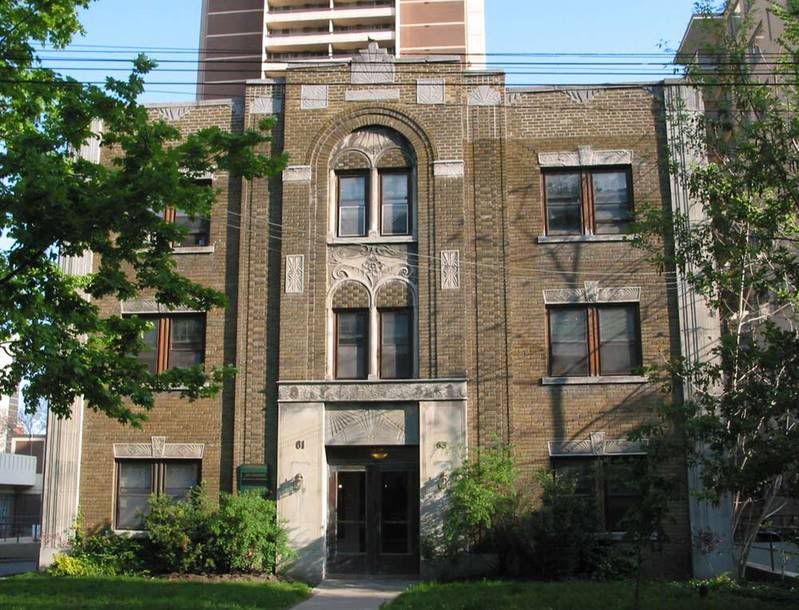
Forsey, Page and Steel's 1938 Park Lane on Eglinton is notable mostly for the fact that Glenn Gould lived here. Of course, it's sleekness is charming as well - why did Eglinton get so many of these?
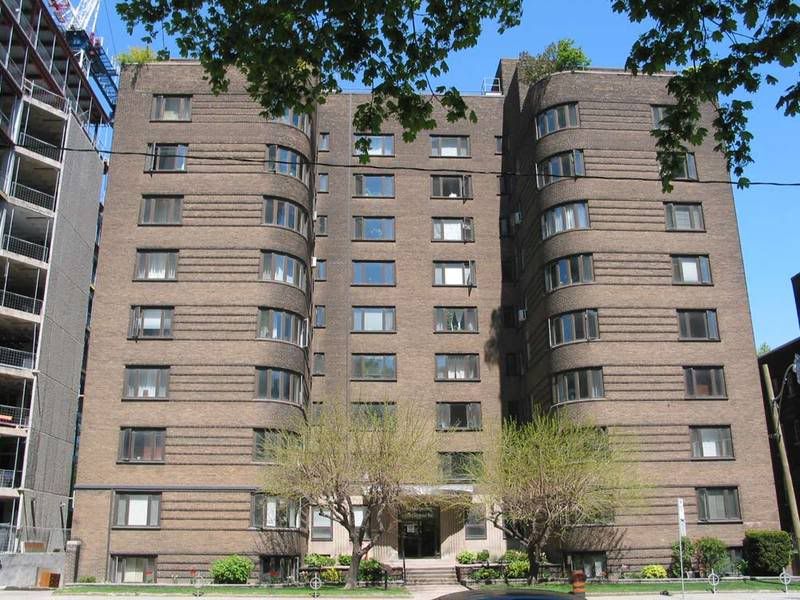
The Garden Court Apartments, also by Forsey, Page and Steel, were completed between 1939 and 1941, and the complex of many buildings was awarded a Silver Medal in the very first Massey Medals in 1950. I love them just for this: their art deco sleekness sharing awards with many modernist buildings, a single awards ceremony capturing two completely different eras.
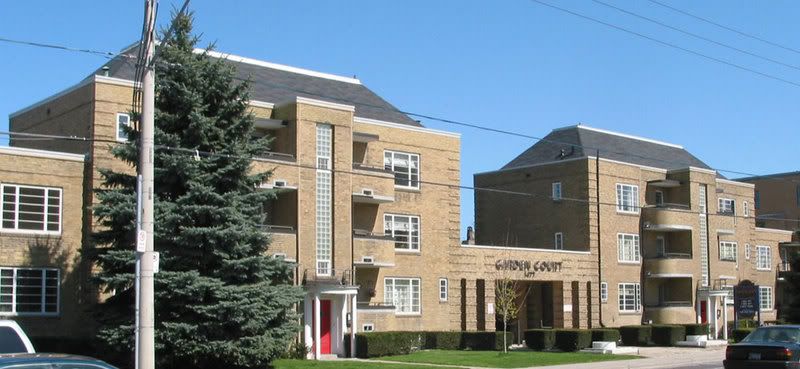
Henry J. Chowan's 1939 Fleetwood Apartments brings some welcome art deco (art moderne?) curves to an increasingly fusty stretch of St. Clair.
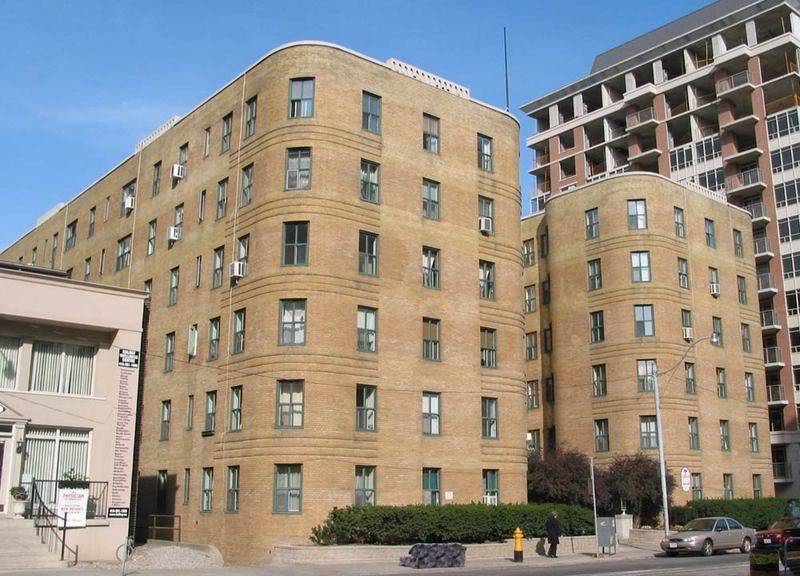
J. Gibb Morton's Cloverhill Apartments (1940) embody art deco styling without the curves - restrained but I love those corner windows.
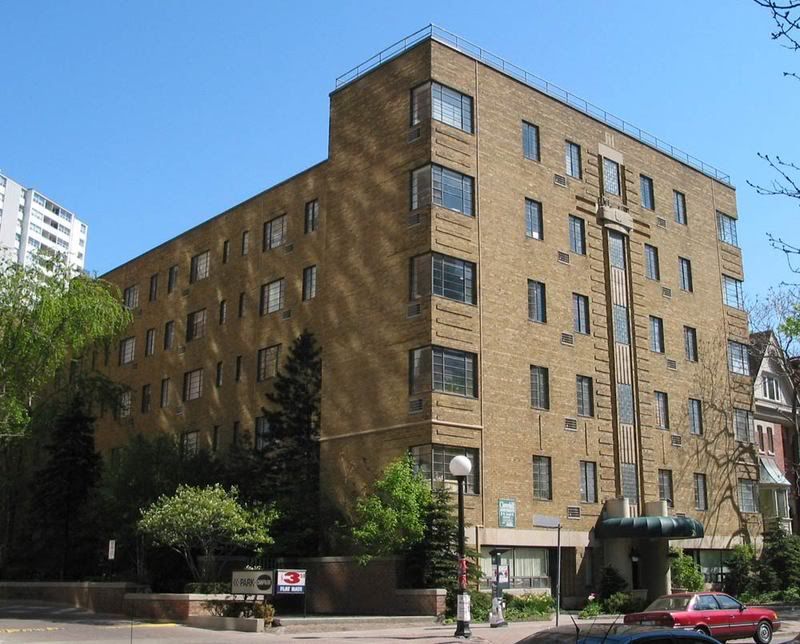
John Parkin / Forsey, Page & Steel's Forest Hill Manor (also 1940) is another good example of the many fine low-rise buildings to be found in Midtown Toronto (Uptown? Whatever).
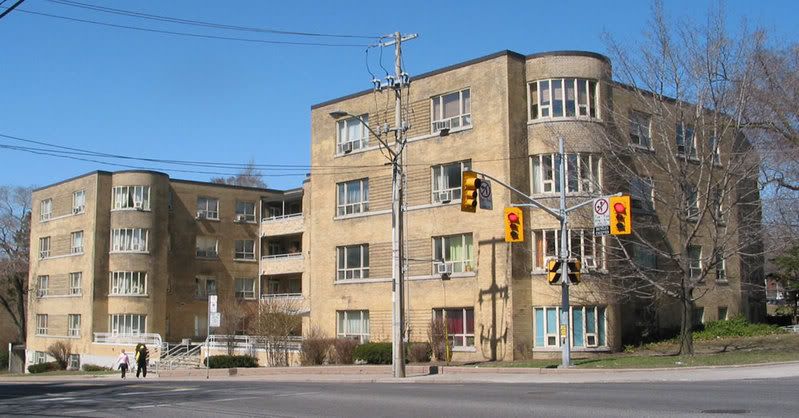
Modernist
Peter Dickinson's Benvenuto Place (1953) has stood the test of time well and would need to be included in any discussion of low-rise residential in the city. The Bureau of Architecture + Urbanism said this remains a model for sophisticated urban housing in Toronto, and just so.
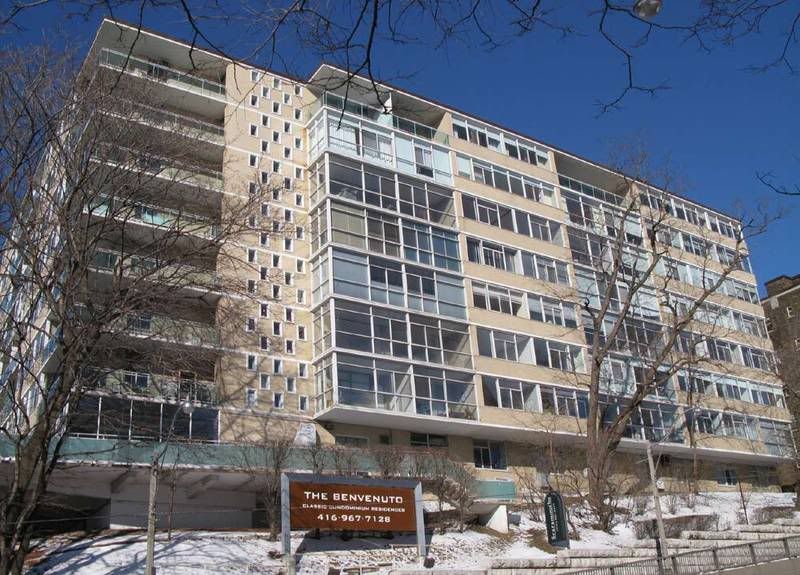
I don't know the date of Ava Manor for sure, and it's largely unremarkable, but I love the unusual detail of the circular unit on top. Given it's location, I fantasize that the unit is occupied by a brittle-boned little Jewish woman who has had an incredibly fascinating life. Although her unit (in which she has lived since 1966) is a bit decrepit and in need of repair, it is filled with artworks carefully chosen by herself and Saul (god rest his soul). I want to know her.
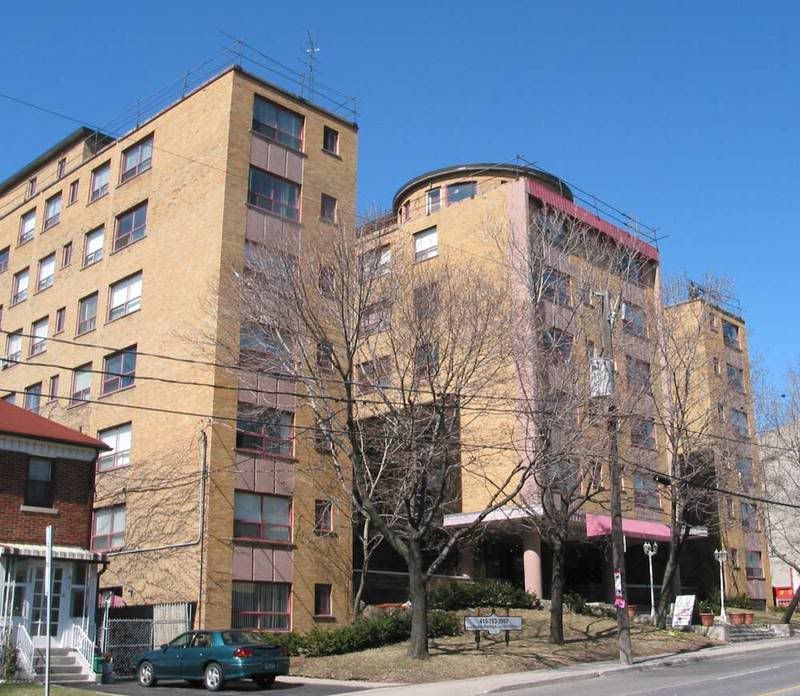
Rosedale is a the surprising haven of many modernist low-rise buildings, now all protected under the Inventory of Heritage Properties. I don't think I would say that any are outstanding, but given their location they are well maintained, and look pretty much like they did when built. I quite like many of them, and I find it remarkable that they are tucked in amongst all those mansions. Imagine trying to build something like that now! I find it a remarkable episode in our history that Rosedale was once vulnerable to re-development pressures.
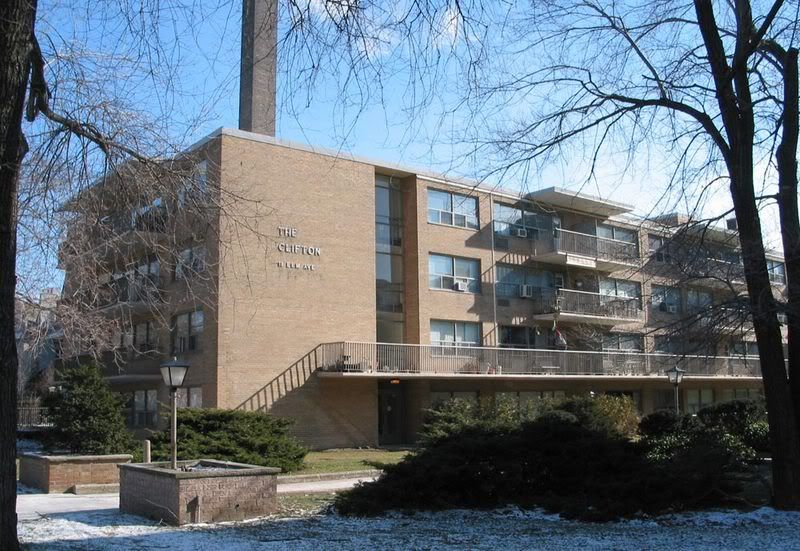
I know little about the St. George Towers in the Annex, but what collection of low rise buildings wouldn't have a representative from St. George, which has a number of these restrained modernist pieces, of which this is my favourite.
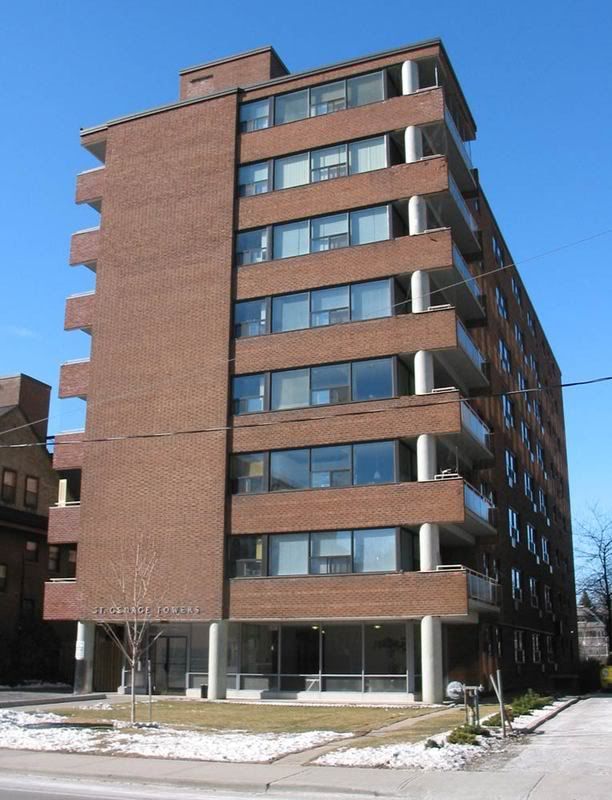
Sixties Fabulousness
A few examples of sixties optimism, these from Uno Prii, and on the Inventory of Heritage Properties. 1963 brought us 11 Walmer Road, and 1965 brought us 425 Avenue Road.
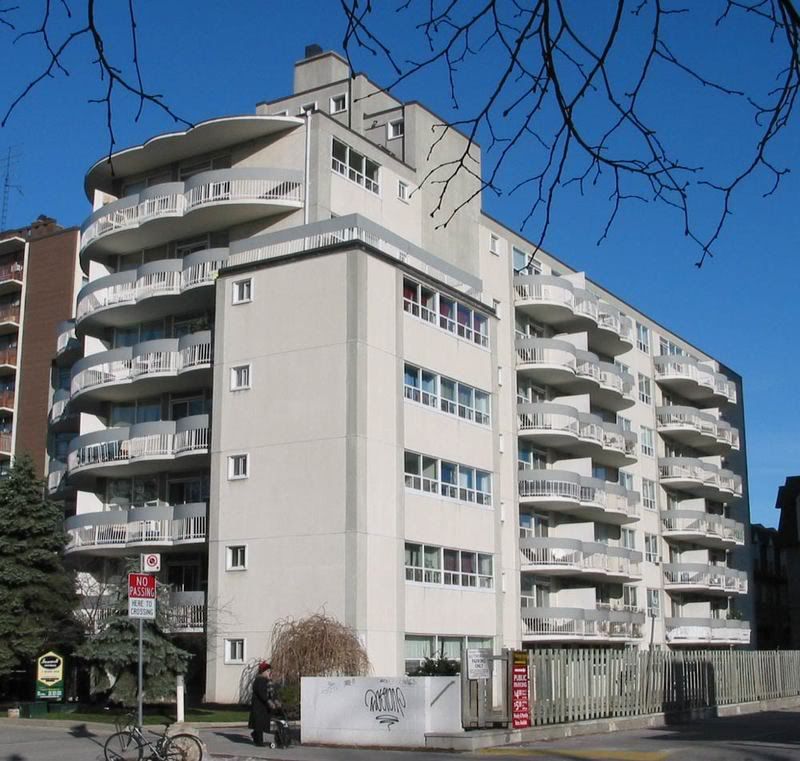
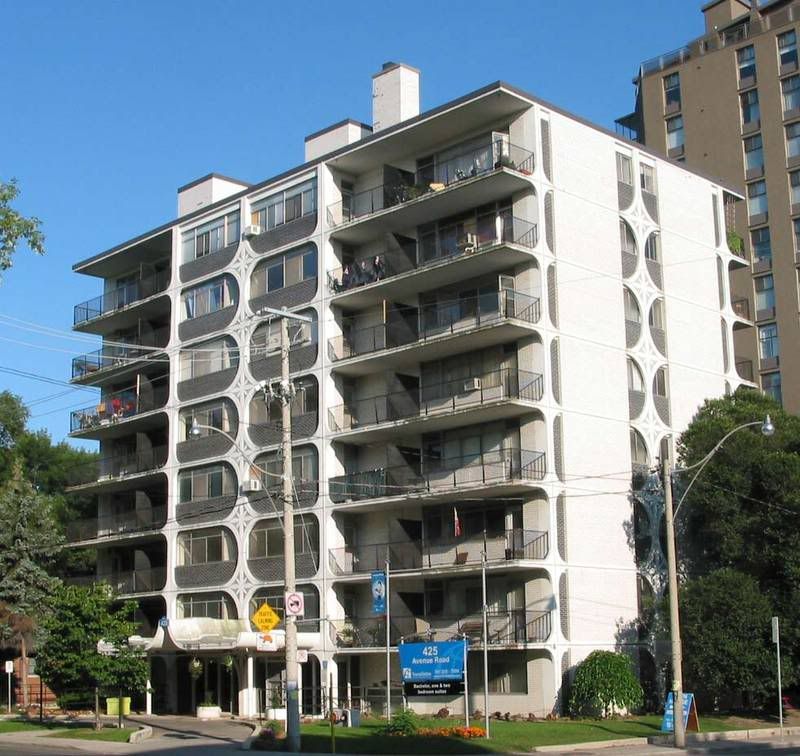
Some additional sixties things, and I admire the fun things they did with coloured bricks at the time. The LaSalle Towers on Lawton Blvd is one of many 1960's (1950's?) buildings in that area, which saw one of the first great booms of residential architecture outside the core.
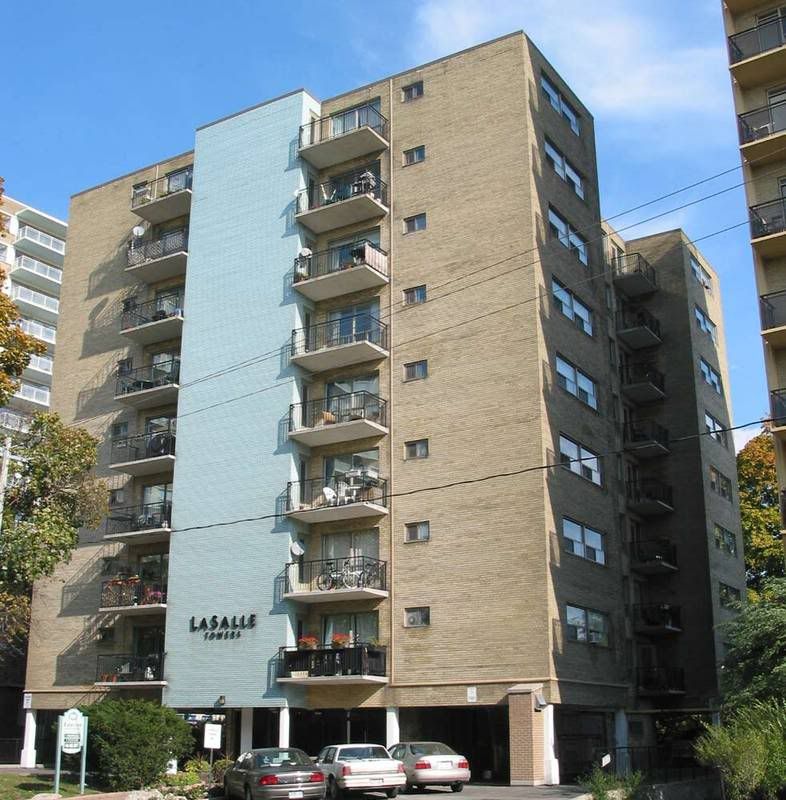
And I love the name "Melba Apartments", given to this fetching black-bricked composition.
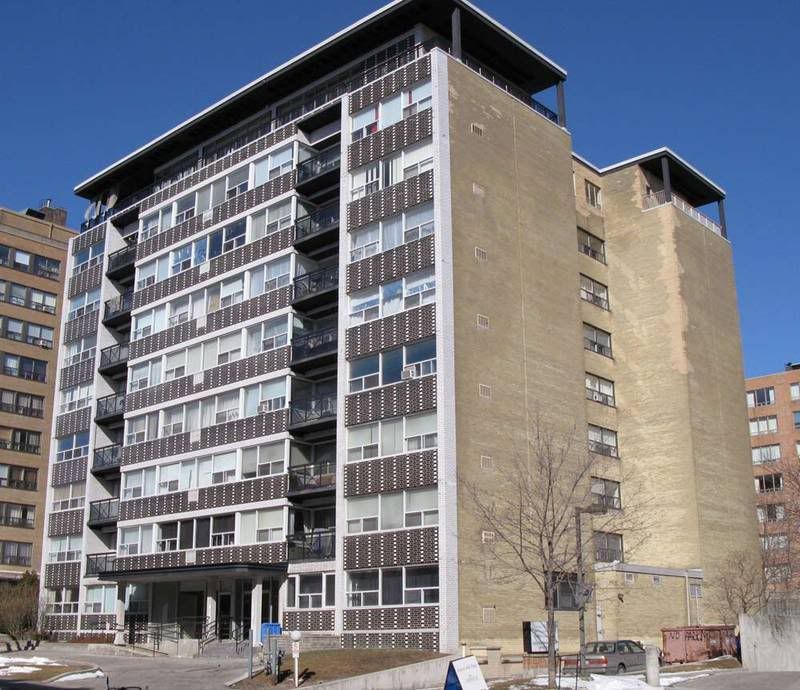
This example, combining lovely names for both the street and building (Palazza, on Shallmar Blvd - how can one go wrong with this double dose of happiness) is gently undulating, a bit of restrained yet happy sixties loopiness.
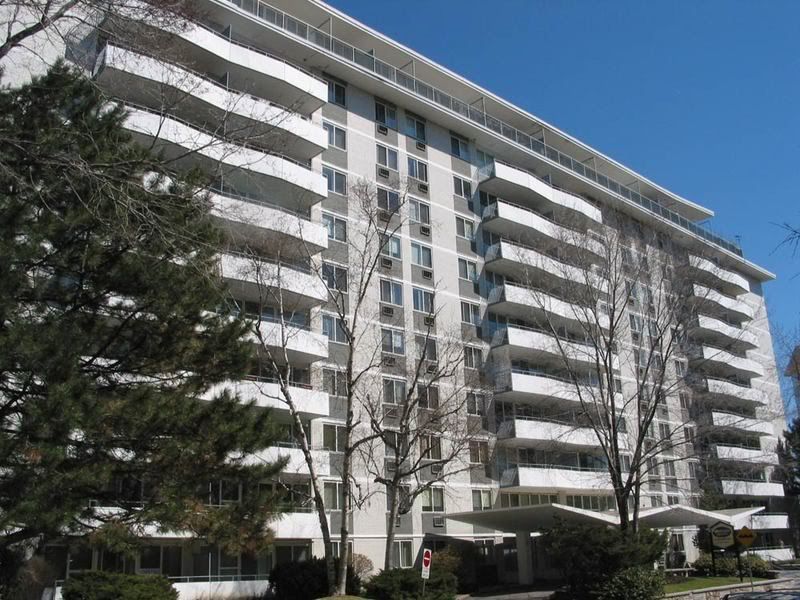
The Four Thousand, hidden off Yonge near the 401, has a great porte cochere and that undulating roofline. Nicely maintained as well.
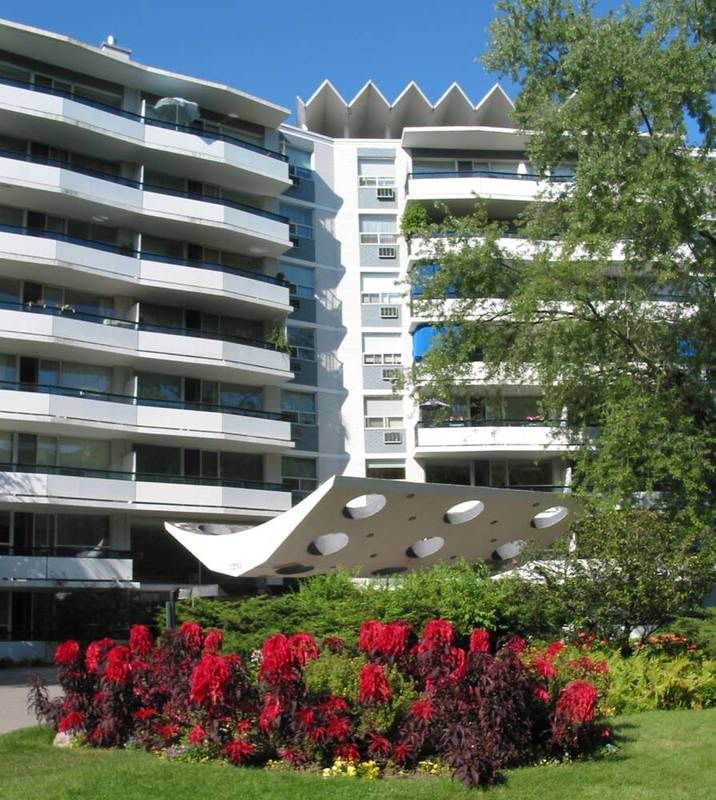
Finally, we have Casablanca, looking as if it is ready for takeoff (perhaps appropriate, with its name), livening the otherwise deadly dull decline near Davenport.

(continued ...)
Early Low-Rise Residential
Toronto is not blessed with a large number of very early apartment buildings, and when I look at these three examples, I can't say that I'm exactly disappointed. These three, the Rosecourt Apartments (1913), Forest Hill Apartments (1931), and the Balmoral Apartments (1929, Stephen Coon and Sons) strike me as being heavy and downcast. Perhaps unfair to pick on the poor little Rosecourt, so very heavy feeling with its crenellated twin towers - it's just ungainly. The Forest Hill does it's work along a commercial part of Spadina in Forest Hill Village admirably, lending a (shall I say it?) vaguely New-Yorkish feel to the strip. But they all strike me as heavy and somewhat unpleasant. Still, death to those who would ever suggest getting rid of these. (They are all on the Inventory).



Art Deco
The Star Mansions are an example of Toronto's stripped down Art Deco vernacular, in which the city's architects (in this case, H.C. Roberts, in 1932) barely dipped their toe into a style perhaps too florid for our northern climate.

Forsey, Page and Steel's 1938 Park Lane on Eglinton is notable mostly for the fact that Glenn Gould lived here. Of course, it's sleekness is charming as well - why did Eglinton get so many of these?

The Garden Court Apartments, also by Forsey, Page and Steel, were completed between 1939 and 1941, and the complex of many buildings was awarded a Silver Medal in the very first Massey Medals in 1950. I love them just for this: their art deco sleekness sharing awards with many modernist buildings, a single awards ceremony capturing two completely different eras.

Henry J. Chowan's 1939 Fleetwood Apartments brings some welcome art deco (art moderne?) curves to an increasingly fusty stretch of St. Clair.

J. Gibb Morton's Cloverhill Apartments (1940) embody art deco styling without the curves - restrained but I love those corner windows.

John Parkin / Forsey, Page & Steel's Forest Hill Manor (also 1940) is another good example of the many fine low-rise buildings to be found in Midtown Toronto (Uptown? Whatever).

Modernist
Peter Dickinson's Benvenuto Place (1953) has stood the test of time well and would need to be included in any discussion of low-rise residential in the city. The Bureau of Architecture + Urbanism said this remains a model for sophisticated urban housing in Toronto, and just so.

I don't know the date of Ava Manor for sure, and it's largely unremarkable, but I love the unusual detail of the circular unit on top. Given it's location, I fantasize that the unit is occupied by a brittle-boned little Jewish woman who has had an incredibly fascinating life. Although her unit (in which she has lived since 1966) is a bit decrepit and in need of repair, it is filled with artworks carefully chosen by herself and Saul (god rest his soul). I want to know her.

Rosedale is a the surprising haven of many modernist low-rise buildings, now all protected under the Inventory of Heritage Properties. I don't think I would say that any are outstanding, but given their location they are well maintained, and look pretty much like they did when built. I quite like many of them, and I find it remarkable that they are tucked in amongst all those mansions. Imagine trying to build something like that now! I find it a remarkable episode in our history that Rosedale was once vulnerable to re-development pressures.

I know little about the St. George Towers in the Annex, but what collection of low rise buildings wouldn't have a representative from St. George, which has a number of these restrained modernist pieces, of which this is my favourite.

Sixties Fabulousness
A few examples of sixties optimism, these from Uno Prii, and on the Inventory of Heritage Properties. 1963 brought us 11 Walmer Road, and 1965 brought us 425 Avenue Road.


Some additional sixties things, and I admire the fun things they did with coloured bricks at the time. The LaSalle Towers on Lawton Blvd is one of many 1960's (1950's?) buildings in that area, which saw one of the first great booms of residential architecture outside the core.

And I love the name "Melba Apartments", given to this fetching black-bricked composition.

This example, combining lovely names for both the street and building (Palazza, on Shallmar Blvd - how can one go wrong with this double dose of happiness) is gently undulating, a bit of restrained yet happy sixties loopiness.

The Four Thousand, hidden off Yonge near the 401, has a great porte cochere and that undulating roofline. Nicely maintained as well.

Finally, we have Casablanca, looking as if it is ready for takeoff (perhaps appropriate, with its name), livening the otherwise deadly dull decline near Davenport.

(continued ...)
Last edited:









